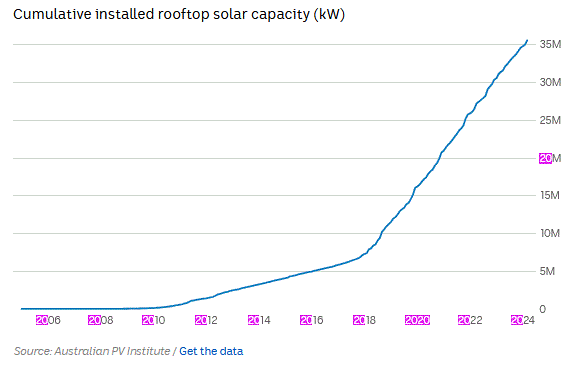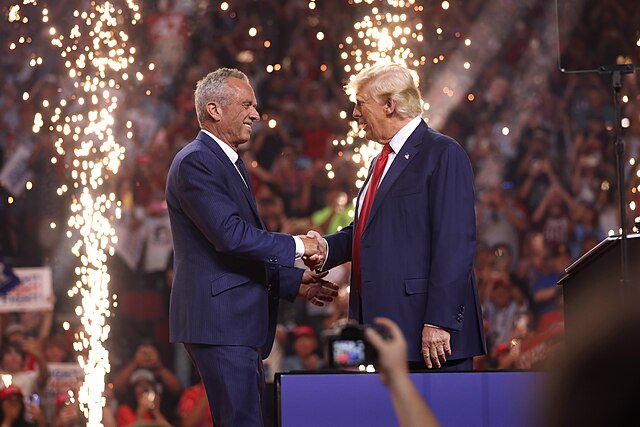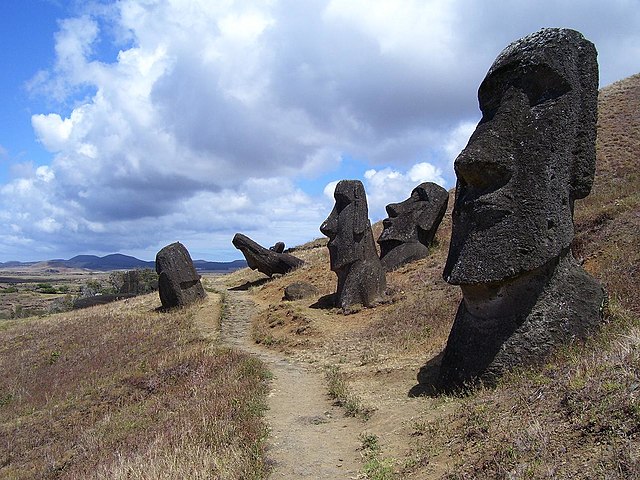|
|
Submissions close today!
It’s better to say something short than nothing at all. Let it be known that we have grave concerns, and far too little time to debate and discuss such far reaching legislation. Please read submissions posted below and add your own here too. Thank you! — Jo
Upload your submission here (button on the right hand side)
Committee Secretariat contact:
Committee Secretary
Senate Standing Committees on Environment and Communications
PO Box 6100
Parliament House
Canberra ACT 2600
Phone: +61 2 6277 3526
[email protected]
Public submission regarding: Communications Legislation Amendment (Combating Misinformation and Disinformation) Bill 2024.
_____________________
 The Misinformation Bill is not just wholly unnecessary, it’s an abject travesty. How did such a preposterous overbearing, undemocratic, anti-science and dangerous piece of legislation get past the first focus group? It wouldn’t survive a high-school debate, and yet, here it is? The Misinformation Bill is not just wholly unnecessary, it’s an abject travesty. How did such a preposterous overbearing, undemocratic, anti-science and dangerous piece of legislation get past the first focus group? It wouldn’t survive a high-school debate, and yet, here it is?
Misinformation is easy to correct when you own a billion dollar news agency, most academics, institutions, expert committees and 25% of the economy. The really hard thing, even with all that power and money is to defend an absurd lie and stop people pointing it out, which is surely the main purpose of the Misinformation Bill amendments. The government can already correct any misinformation that really matters, so these amendments curtail our freedom of speech for no benefit at all.
Guilty until proven innocent?
The amendments turn free speech on its head — instead of having the implicit right to criticize the government, everyone now needs to prove to some judge that their views are “reasonably” satire, or reasonable dissemination for an “academic, scientific or religious” purpose, and that their “motive” is honest and their behaviour is “authentic”.
When it comes to reasonableness in a democracy the highest court should be the court of public opinion, but how can the people decide if they are not allowed to hear it?
How is it even a democracy still if the government is allowed to take our money to force feed us the governments view on the ABC and in every captured university (dependent on government funds), but the people cannot even reply through sheer unfunded creative wit?
This legislation puts a very unfree cloud over all groups, forums, blogs, and social media.
The fines (and all legal fees today) are so obscenely, disproportionately harmful to Australians that few will risk going to court, instead the platforms will be preemptively second guessing what a judge might say is reasonable, and people with serious social media accounts will be second guessing the second-guesses of their platform controllers in fear that they might be thrown off, and lose years of work if they guess wrongly.
Worse, the big platforms, supposedly so “independent” will become unaccountable but de facto arms of the government. The platforms will know if they don’t perform as expected and favorably to the incumbent masters, that the rules will get more onerous, the fines bigger. And thus and verily will the unholy alliance of Big-Tech and Big-Government will become Big-Brother in your conversations, and Big Bankrupter in your nightmares.
The government claim they are not censoring anyone, but it’s just done at arms length with “implausible” deniability. Obviously the laws will censor all of us who are not already controlled by ACMA or the government through a public salary, a grant, or a Code of Practice written into the the Australian Broadcasting Corporation Act.
Who silences the government misinformation, then?
 We were there when the government experts told us margarine with hydrogenated fake vegetable fat would be great for our hearts. We heard them when they told us an ice age was coming, and antibiotics were useless against stomach ulcers. We noticed they told us to hold off on the peanut butter for babies to prevent allergies, only to find out that all these things were misinformation. We were there when the government experts told us margarine with hydrogenated fake vegetable fat would be great for our hearts. We heard them when they told us an ice age was coming, and antibiotics were useless against stomach ulcers. We noticed they told us to hold off on the peanut butter for babies to prevent allergies, only to find out that all these things were misinformation.
What happens when the experts are wrong, but the people who are unconvinced can’t speak up because they might “harm… the efficacy of a preventative health measure”? These health measures may take a … lifetime… to even measure the efficacy. Does the government get a free pass for 40 years?
It was estimated dietary trans fats (found in margarine) were killing 82,000 people a year in the US. (Danaei et al 2009). Should we have fined all the people who talked about this, and perhaps delayed things, and killed a half a million more? Someone speaking against hydrogenated margarine could have been deemed to be spreading “misinformation causing harm to public health in Australia”. So 20 years later, they turn out to be right — will the government compensate the families of the dead who might have chosen a different sandwich spread had they heard another opinion and been able to make up their own mind?
Will Facebook and Twitter need to block the accounts of experts who were wrong? Or, are there two kinds of citizens in Australia — one sort that work for the government, who can give their opinions and get things wrong without losing their right to speak, and the Untermenschen, who cannot speak, even if they are right?
Confidence has to be earned, not ordered
Apparently the citizens of Australia are not allowed to say anything that might harm the confidence in the banking system or the financial markets. But if our banking system is so fragile, or our currency so fake, that it needs a law to force people to “feel confident” then we are in a trouble already.
Nothing damages confidence like making a law to silence critics.
As adults, we filter misinformation our whole lives, it’s our job
We are all adults in this room, and we have lived our whole lives filtering out advertising spin, ignoring political lies, and reading books telling us we can stops storms if we just ride a bike. Since the stone-age we’ve spent our lives climbing from one misinformation-swamp to another, but as adults, it’s our job to figure it out. Free will and all. How dare you treat us like children.
And even the children about to enter the room have to learn how to deal with misinformation. How exactly can we teach them, if the government serves up one permitted line to protect us from accidentally hearing something “wrong”?
It’s not just that this misinformation bill is egregiously wrong, it’s that we shouldn’t have one at all in the first place.
REFERENCES
Danaei et al (2009) The preventable causes of death in the United States: comparative risk assessment of dietary, lifestyle, and metabolic risk factors, PLoS Med, . 2009 Apr 28;6(4):e1000058. doi: 10.1371/journal.pmed.1000058. Epub 2009 Apr 28.
The Bill: Communications Legislation Amendment (Combatting Misinformation and Disinformation) Bill 2024
The 69 page proposed legislation PDF form and Word doc.
Submissions close on the 30 September 2024. (General advice on how to make a submission).
Submissions can be uploaded here (button on the right column) or emailed to the Committee Secretariat below.
9.7 out of 10 based on 120 ratings
8.8 out of 10 based on 22 ratings
8.9 out of 10 based on 27 ratings
By Jo Nova
It’s grand final day in Australia, and awkwardly the State of Victoria risks a grid overload. A truckload of solar power will arrive at lunchtime that no one needs, and which has no place to go.
The largest single generator in Australia now is rooftop solar and it’s virtually uncontrollable. The geniuses running the national grid have subsidized solar panels and made electricity unaffordable at the same time, thus driving more householders into the arms of the solar industry.
So they’ve created an artificial market bubble — as all good communists do. We now have a 20 gigawatt capacity generator that mostly can’t be turned off, except by clouds or possibly Chinese cyberwarfare.
And where autumn and spring used to be the easy seasons, now Sunny spring days are diabolical too — hardly anyone needs their air conditioner or their heater at lunchtime, but solar watts are pouring in.
This was the situation yesterday in Victoria:
Again, the poor sods who built solar industrial parks (marked in red) have to curtail their production massively from 8am to 5pm. The red curve is supposed to look like the yellow curve. The missing red peak is wasted solar production.
As the yellow uncontrollable peak rises towards the black line (the total demand), the whole grid has a problem — more reliable cheap generators have to shut down to prevent the toxic excess electricity building up. Without the reliable generators, with their 500 ton turbines spinning at 3,000 revolutions per minute, (or 3,600 in the USA) the grid loses frequency stability, and spinning inertia, and the ability to cope when a cloud rolls over. The problem of excess solar at lunch time is also called The Duck Curve and has been known for years. It’s not like this snuck up and surprised anyone, yet here we are — courting disaster.
The ABC reported on this, but can’t bring itself to call this what is is — a “Solar Glut” dumped on the grid. Instead rooftop solar is a “juggernaut” and the grid faces a “low demand warning”, as if you personally are the problem, for not using enough electrons. Don’t blame the artificial pointless bubble of solar panels.
by Daniel Mercer, ABC
Rooftop solar output has reached such enormous levels that authorities have begun issuing warnings about their ability to keep the electricity system from being overloaded at times.
In an extraordinary first this week, the body that runs Australia’s biggest energy market said the supply of solar power in Victoria threatened to overwhelm demand for electricity from the grid amid mild, sunny conditions.
It said Friday’s oversupply of solar was so acute that demand for power from the grid would fall below a threshold critical for keeping the electricity system on an even keel.
Even the AEMO (the Australian Energy Market Operator) calls it a minimum system load notice – not a solar surge, or a renewable overload.
And despite the toxic excess of solar panels, and that we’ve known this day would come, in true Soviet fashion, we’re still installing as many as we can (see below). The trainwreck continues.
 The relentless rise of solar PV in Australia. That would stop dead in its tracks if householders had to pay fair costs for the frequency stability, the back up power, and the storage.
The solution, according to government experts, is not to have a real market and accurate prices, it’s to give more powers to some bureaucrats so they can order battery owners to discharge before lunch and be ready to soak up the dangerous excess at midday. The battery owners don’t like that, but like an anaconda, the government gradually tightens its grip until the free market is dead. The other “solution” is to add controllers to home solar panels so the government can switch them off (which is starting to happen in South Australia and Western Australia). Solar panels owners don’t like that either, but they were sold rainbows and fairy cakes that no one could deliver.
The communist quislings complain that the market is failing us and needs more governance. But the truth is, the overlords destroyed the free market long ago. The people want reliable electricity, and if they were allowed to choose reliable power over renewable energy, the problem would solve itself.
Meanwhile, grid managers surely pray for cloudy days. Soon, some bright spark is going to suggest cloud seeding for grid stability.
UPDATE: The grid demand fell to 1817MW in Victoria, and survived but prices spiked to minus $367 today during the low minimum solar belly of the duck.
9.8 out of 10 based on 118 ratings
8.1 out of 10 based on 18 ratings
 Robert Redfield stands to the right of Donald Trump on Feb 29th 2020 for The Coronavirus Taskforce. By Jo Nova
The rift in the political heliosphere continues to tear
The phase change is upon us. The most unlikely people are suddenly fans of Donald Trump and talking about cleaning up corruption. From the core command center of the US Pandemic Bureaucracy, the Former CDC director, Robert Redfield, whom Robert F Kennedy Jnr mercilessly criticized, has come out endorsing President Trump, and admitting Kennedy was right all along.
Redfield was director of the CDC from 2018 – 2021, and now says that the three behemoth government health agencies — the FDA, the NIH and the CDC, have been captured by industry and the federal government must fix this problem. Furthermore, he says Trump “has chosen exactly the only person who can do this, Robert F Kennedy, Jnr.”
Across a century-plus of cozy courtship, the federal regulators have nearly married the regulated, especially in health care. Today, private industry uses its political influence to control decision-making at regulatory agencies, law enforcement entities, and legislatures.
Kennedy is right: All three of the principal health agencies suffer from agency capture. A large portion of the FDA‘s budget is provided by pharmaceutical companies. NIH is cozy with biomedical and pharmaceutical companies and its scientists are allowed to collect royalties on drugs NIH licenses to pharma. And as the former director of the Centers for Disease Control and Prevention (CDC), I know the agency can be influenced by special interest groups.
But it doesn’t stop in the health agencies: the U.S. Department of Agriculture is a captive of industry, too. Created to help the family farmer and to ensure a wholesome food supply, today the agency often favors large corporations over the interests of small farmers and the public’s health. To cure our children, we must reevaluate our food choices and the underlying practices of the agricultural sector. We must prioritize wholesome and nutritious food.
If we do not discover the depth of our corporate capture problem and fix it, we cannot truly address chronic disease in this country.
Redfield says nothing about vaccines specifically, but if the agencies are captured, and Kennedy is right about so many things, the stinking mess is sitting there on the table, unmentioned.
And the question of course is, where was Robert Redfield when the nation needed him?
Has he seen the light, or is he jumping from a sinking ship, and throwing himself a life-raft?
Kennedy was shocked:
It’s hard to believe Redfield would be doing this if he thought Trump would lose.
Redfield had years to speak up about the problems at the CDC and other agencies. He had years to improve childhood nutrition or to explain the risks with a rushed roll out of vaccines and he did nothing. But his endorsement surely adds a major dose of credibility to Kennedy’s claims, and thus to Trump. It’s hard to call Kennedy a conspiracy theorist when the head of the CDC says he was right.
There are a lot of left-leaning women who are very concerned about problems with food additives and children’s health. Some of these same women were worried about vaccines even before Covid arrived. Kennedy is speaking their language, and the Democrat party establishment has nothing at all for them.
The mood is shifting.
10 out of 10 based on 99 ratings
8.9 out of 10 based on 15 ratings

Jo Nova
The Greens have become the “punching bag” of the Left and the Right
Things just keep getting worse for the Greens in Germany. After two terrible performances in recent state elections the Party “crashed out of the state parliament” in the Brandenburg region of Germany (which surrounds Berlin). Results were so awful, the two current leaders of the German Greens have jointly stepped down.
The Greens won a mere 4% of the vote in the region, not even reaching the minimum 5% required to win a parliamentary seat in the State election. About 70% of their voter base had abandoned them in the last five years. In Thuringia, the entire traffic light ruling coalition of three parties barely amassed 10% of the vote collectively.
The right-wing AfD (Alternative for Germany) party “keeps rising despite efforts to stop the party” says Nette Nöstlinger at Politico, slightly baffled. The establishment used the nastiest names they could think of, and it didn’t work:
Germany’s mainstream leaders have made a concerted effort to stop the rise of the AfD by warning voters of the party’s growing extremism, with some leaders even calling it a Nazi party.
We’ve heard this before:
State-level domestic intelligence authorities have classified the local branches of the party in both Saxony and Thuringia as extremist organizations aiming to undermine German democracy.
The nasty names are backfiring, because no one is listening anymore:
That points to a core problem that won’t be easy for centrist parties to grapple with — a growing mistrust of the centrists and the country’s institutions that has fomented anti-establishment fervor across a large swath of the country.
In other words, even as many centrist leaders and institutions in Germany warn of the AfD’s extremism, many voters have simply stopped listening. In fact, the approach may be backfiring by alienating AfD voters.
When the TV commentators called the AfD “extremist” the leader in Thuringia said “Please stop stigmatizing me”. “We are the number one people’s party in Thuringia. You don’t want to classify one-third of Thuringian voters as right-wing extremists, do you?” But of course, the TV commentariat probably did want to do exactly that…
Bullying is brittle. When it fails, it crumbles into anti-matter, because there was nothing but nastiness to fall back on.
 Even The Guardian has noticed that the Greens have a crisis: Even The Guardian has noticed that the Greens have a crisis:
In the recent election campaigns, it [The Greens] often appeared to be the punchbag for parties across the spectrum. Accusations were rife that the party was trying to “dictate” the lives of ordinary Germans – from which type of heating system to use, to which car to drive – with the BSW and AfD going so far as to compare the Greens to the Communist regime of the former German Democratic Republic.
There is hope. Young voters are abandoning the party faster than any other age bracket:
The party has also lost a larger proportion of its younger voters at recent elections than any other party. In Sunday’s Brandenburg poll, for instance, it saw its support in the 16-to-24 age bracket drop by 24 percentage points, a bigger fall than in any other age range. —
The Crisis of the Greens and the Future of the Left
I have been thinking a lot about the Greens since their drubbing in the recent German elections. Something strange and unexpected is happening to them – something that even two years ago I wouldn’t have predicted. They are bleeding support; they are on the defensive and suddenly everybody hates them. In East Germany you could even say that they are in outright collapse. The party of the future, the party of the youth, the party at the cutting edge of progressivism, is now withering on the vine. And I suspect that this is not just happening in Germany. It may be happening here faster than it is in other countries, but the Greens are an international phenomenon, and Green politics are in trouble in many places beyond the Federal Republic.
(Paywalled)
Votes for the Greens have been stolen from both sides
The collapse in popularity is about the climate, the heat-pumps, the cars, the energy prices — but it’s also about immigration and the war. A new leftist force has appeared from nowhere in the last few months, run by a former communist, but wanting to curb immigration:
In some ways, the biggest winner of the night was the populist-left Alliance Sahra Wagenknecht (BSW), which is led by a former member of East Germany’s communist party. The BSW finished third in both states, a notable result for a party that only formed several months ago.
The party, which merges traditional right-wing stances on immigration and other social issues, has repeatedly called for an end to German military aid for Ukraine and negotiations with Putin — a view for which there is much sympathy in Germany’s formerly communist East. — Politico
It’s part of the Great Realignment of politics. The new force on the left attacks the Greens for being arrogant and out of touch with the workers:
James Angelos, Politico, August 26th, 2024
Sahra Wagenknecht’s brand of “left conservatism” is upending German politics ahead of critical elections in the east.
Listening to Sahra Wagenknecht, Germany’s hard-left icon, you could be forgiven for coming away with the impression that the greatest threat to democracy is “lifestyle leftists” nursing lattes in reusable cups while shopping for organic kale at a Berlin farmers’ market.
Such well-off, eco-friendly urban bohemians hold what they deem to be “morally impeccable” views about everything from Ukraine to climate change, she says, and then impose those beliefs over regular people with draconian zeal.
Sahra Wagenknecht’s brand of “left conservatism” is very tailored to East Germany, but some of it will translate widely. Uncontrolled immigration is a hot button everywhere. She attacks the influx of asylum seekers as a threat to the welfare state, which, she says, requires a “certain degree of homogenity to function”. She attacks the gender bender transformations as something that benefits the big pharmaceutical companies. All of this will resonate across the political divide. At one point last year, the leader of the AfD in Thuringia was so impressed with her, he invited her to join the party in a speech.
The pure environmental Greens are a luxury bubble that no one can afford anymore. Those days are over.
h/t John Connor II
Photos adapted from Image by Image by PayPal.me/FelixMittermeier from Pixabay and Presentsquare Presentsquare from Pixabay
9.9 out of 10 based on 99 ratings
9.3 out of 10 based on 15 ratings
 The Ministry of Truth will control your every online conversation By Jo Nova
The Censors are always the bad guys
The only way to fix misinformation is with better information.
Dear Australians, we only have until Monday to lodge a submission against the proposed amended Misinformation bill.
It’s a bill so bad warnings are coming from the far side of the world
The Cato Institute warns that if Tech companies take the simple route and comply with the Australian proposal Americans using mostly American companies may be effectively subject to misinformation rules set by foreign governments (and that may be the point, eh?) The great leftist global machine gets “help” with every country conquered by censorship glue.
Why do the guys with galactic megaphones need to shut you up?
Suppose misinformation was harming Australians, what stops the government giving us the correct information? They have the billion-dollar ABC, the billion-dollar CSIRO, the entire tamed academic sector, every school in Australia (they’re all funded and controlled by the government) — and yet somehow against this, an unfunded mum or dad writing on Facebook or a blog might harm trust in government institutions and therefore must be shut down, before any harm even occurs?
Think about what this says about the Australian ABC? It must be pretty useless if it can’t save Australians from verified lies? Things could only be this absurd if it doesn’t have any truths to refute “the lies”, or it doesn’t have an audience because it’s an odious propaganda machine no one wants to watch. Or both.
The Labor government claims that they won’t be censoring content, which is a lie, the media “platforms” will be forced to do it for them. If the platforms don’t comply, the government will send men with guns to their door to take away 5% of their global income. Even if the fine is never issued, the instant this law comes into effect, the threat of being savagely fined will mean platforms will be censoring Australians.
How would we keep comments open on this blog? Ask everyone to write satirically?
Ban anything that may be contributing to harm that might happen, maybe
The legislative bomb is a multifunctional octopus. It pretends to prevent “serious harm” but the proposed legislation defines misinformation as anything “reasonably likely to cause or contribute to serious harm”. So there are three legalistic qualifiers there for any sympathetic judge to crush dissent. What’s “reasonable” — depends on whether you can afford a QC. What’s “likely” to cause harm (but hasn’t actually done it) is anyone’s guess or the work of seers and soothsayers. And a “contribution” to serious harm might be just about anything. Did you retweet that scientific study showing that Antarctica isn’t warming? You’re harming the planet, the government energy policy, killing the spotted quoll, and damaging financial prospects for solar manufacturers. Stop that now!
Thou shalt not harm the government, the economy, the bankers, or government health plans
It’s hard to believe they revealed their real intentions so obviously. This bill is not designed to protect the people, it’s designed to protect the government. What’s the worst kind of “serious harm” you can do to an Australian — harm the government, or their referendums. (The Labor Party are so hurt they lost the “Voice” vote last year.) It’s the first thing they list.
Read their own words in Amendment 14:
For the purposes of this Schedule, serious harm is:
(a) harm to the operation or integrity of a Commonwealth, State, Territory or local government electoral or referendum process; or
(b) harm to public health in Australia, including to the efficacy of preventative health measures in Australia; or
(c) vilification of a group in Australian society distinguished by race, religion, sex, sexual orientation, gender identity, intersex status, disability, nationality or national or ethnic origin, or vilification of an individual because of a belief that the individual is a member of such a group; or
(d) intentionally inflicted physical injury to an individual in Australia; or
(e) imminent: (i) damage to critical infrastructure; or (ii) disruption of emergency services;
in Australia; or
(f) imminent harm to the Australian economy, including harm to public confidence in the banking system or financial markets;
that has:
(g) significant and far-reaching consequences for the Australian community or a segment of the Australian community; or
(h) severe consequences for an individual in Australia
The second thing on the list are words that harm “preventative health measures” which means vaccines — the biggest, worst and most expensive preventative measure the government ever forced on the people.
The third priority is to outlaw any harmful words against their favourite protected mascot groups. So if you think women in one religion are being mistreated or harmed, you can’t say that. If you think children are being hurt by anyone in a protected mascot class, you’re not allowed to say that either. The laws will hurt those they claim to “help”.
It’s revealing that the other protected class are the poor suffering bankers. You must not “harm public confidence” in banks or financial markets. Presumably pointing out that banks are technically insolvent might cause a bank run. Don’t mention that bankers make money from printing our national dollars from thin air, effectively profiting by loaning money they don’t have, which would be called counterfeiting if anyone else did it. Shh!
Lastly, if you think someone is doing criminal activity don’t say so, because it might have “severe consequences for an individual”. Is that what the Labor Party meant to say — let’s protect criminals?
Who decides “the truth”?
Apparently it’s not God, it’s ACMA — The Australian Communications and Media Authority.
Apparently, it’s the team with the most money. Only a billionaire, or a government, could afford to set up a “third party fact-checker”.
The number of people up in arms about these rules grows by the day: Nick Cater, Phillip Altman. Roger Pielke Jnr. Caldron Pool. Australian Citizens Party and The Cato Institute.
Please copy your submission below to inspire others. Phillip Altman has a list of Senators emails to cut and paste.
REFERENCES:
The Bill: Communications Legislation Amendment (Combatting Misinformation and Disinformation) Bill 2024
The 69 page proposed legislation PDF form and Word doc.
Submissions close on the 30 September 2024. (General advice on how to make a submission).
Submissions can be uploaded here (button on the right column) or emailed to the Committee Secretariat below.
Committee Secretariat contact:
Committee Secretary
Senate Standing Committees on Environment and Communications
PO Box 6100
Parliament House
Canberra ACT 2600
Phone: +61 2 6277 3526
[email protected]
h/t to Andrew M, David Maddison, Stephen Neil, Nick Cater
9.9 out of 10 based on 87 ratings
9.4 out of 10 based on 16 ratings
 Battery bombs in the suburbs? By Jo Nova
You think exploding pagers was a wicked trick….
Hypothetically, suppose you were distracted while you tried to change tropospheric jet streams, and accidentally gave away your national manufacturing to a foreign adversary. Next thing you know, you’re buying the batteries they make, and installing them in essential grid infrastructure and thousands of homes. You’re patting yourself on the back for getting a cheap deal (never mind the slaves) and it all seems dandy until one sunny day, a leader who was cheesed off with a trade deal, quietly switched off the “overcharge protection” on all of them remotely.
At that point, millions of solar panels are pumping excess electricity into batteries that have no safety cut off. A few houses start to go off like popcorn, and an hour later we’re all living at the Western Front.
Brian Craighead – chief executive of Energy Renaissance, has come to warn us — it’s a hidden threat to national security. He says Australia has already installed 220,000 batteries that were made in potentially unfriendly places, and each home battery has roughly 7,500 times as much energy as a pager. As he remarks: “overcharge is when all hell breaks loose”.
Now, he happens to sell secure battery management systems — so he has an interest in scaring the socks off Energy Ministers and hyping things up, but ask yourself this: would Anthony Albanese have seen this coming?
To ask the question is to know we’re in trouble.
By Jared Lynch, The Australian
“When everyone talks about battery safety, we tend to think about the chemical stuff – these fires that you see on videos of Tesla cars going up. But those are relatively unusual. The key thing to focus on is battery software … that’s what protects them from overcharging.
“Let’s say you were a bad actor from a bad country, here’s what you could do, and this would be horribly easy. For example, you could say on January 7, 2025, I’m going to turn off the overcharge on 200,000 batteries installed in homes in Australia. Nothing is going to happen until then.”
It would make a great movie, but a lousy life:
“A co-ordinated attack exploiting these vulnerabilities could lead to widespread fires, explosions, and a crippling of our energy infrastructure. The risk extends beyond individual homes. Large, imported grid-connected batteries are becoming integral to Australia’s national energy grid. These massive storage systems, often managed by foreign-developed software, could be susceptible to cyber-attacks or sabotage, posing a threat to national security and public safety.
“There’s a clear and present danger.”
As Craighead says (so colorfully) — it’s like pink-batts on steroids. (A program here in Australia where a Big Government-made bubble in home insulation killed 3 poorly trained people and set fire to 200 homes.)
In the end, after the bombs and the blackouts, the hit to the GDP and the death toll — it will all be deemed a dreadful accident, due to a fault in a minor part, and a hot day caused by climate change. Everyone will know what happened, but no one will want to risk the lobster-wine-coal-barley-beer-students deal, and besides the nation needs to order new fridges and solar panels.
Unless, of course the home-battery-bombs were a decoy in a larger hostile plan, in which case we’ll have bigger things to worry about.
Speaking of which:
The US banned the Pentagon from buying batteries from six Chinese manufacturers earlier this year.
9.8 out of 10 based on 104 ratings
9.2 out of 10 based on 11 ratings
8.3 out of 10 based on 26 ratings
And the Southern Hemisphere steals the sun …
8.9 out of 10 based on 37 ratings
By Jo Nova
It takes a lot of money to get a Green saviour out of bed…
If these green groups were really tin-rattling charities supported by Mum and Dad donors, there would be outrage that so many funds were diverted from forests and fluffy animals to lining the pockets of the staff. But apparently the largest donors to these groups don’t care either, because the money keeps on flowing.
According to E&E News the CEO of the World Wildlife Fund, Carter Roberts, takes home a nifty $1.2 million each year in compensation. Similarly the president of the Environmental Defense Fund (EDF) gets close to one million each year, and the head of the Nature Conservancy gets three-quarters of a million. It takes half a million dollars to get the chief of the “Rainforest Alliance” to turn up for work, and $415k to feed the account of the president of the Wilderness Society. The two co-directors of Greenpeace USA get about $330,000 a year each. “Nice work if you can get it”…
Thanks to Climate Depot:
E&E News by Politico
The heads of influential groups including the World Wildlife Fund, Environmental Defense Fund and Nature Conservancy are among the top-paid leaders in the environmental movement, according to an E&E News analysis of 29 groups’ most recent tax filings.
1. Carter Roberts, president and CEO, World Wildlife Fund
Roberts, who has led the massive international conservation group since 2005, remains one of the environmental world’s top-paid leaders. His base pay in 2022 was $904,841, according to the World Wildlife Fund’s tax records. Roberts’ total reported compensation that year was $1,204,775.
The WWF gets about $470 million USD in revenue each year, of which “government grants” amounted to a nice $74 million last year (did you vote for that?). The WWF is hardly going to bite the hand that feeds it, so no wonder the WWF is missing in action when Big Government policies wipe out whales or kills koalas. Last year WWF spent $145 million on things classed as “public education”, whatever that means. In the hands of a political activist, it might look a lot like a disguised election fund. Or in the hands of an industry player it might look like advertising, speaking of which, did you know WWF worries about climate change but actively opposes nuclear power?
Can anyone see any wildlife worth protecting here?
WWF appear to be trying to save the solar industry…
Purely hypothetically, if President Xi is not funneling money through to the WWF, he’s missing an opportunity to sabotage the West. And if he was funding the WWF through large philanthropic trusts, who would know?
WWF is deep within The Machine
To understand just how embedded the WWF is with the powers that be, consider that billionaires and bankers have been funding it for years. Among the original founders in 1961 was Godfrey Rockefeller. One of the largest donors has been the Moore Foundation, set up by Intel Founder Gordon Moore. Recently Jeff Bezoz gave the WWF at least $100 million, while bankers like HSBC have pledged “multiple millions”.
One former President of the WWF was William K Reilly, who was also at one time director of DuPont, ConocoPhillips, and of Royal Caribbean. He was Administrator of the US EPA from 1989 to 1993 and headed up the US delegation to Rio in 1992 while he was also President of the WWF. Get the picture? It just goes to show how the WWF is just another arm of Big Government and Big Business.
In terms of where the $450 million in revenue end up each year, about $44 million was used just for fundraising. And according to InfluenceWatch salary expenses were $70 million in 2020 plus another $4 million in “executive compensation” and $17 million for “other employee benefits”. So that’s a third of the budget. It is a machine that feeds itself.
Environmental non-profits are corporate conglomerates and political lobby groups masquerading as a charity.
9.7 out of 10 based on 114 ratings
8.5 out of 10 based on 13 ratings
By Jo Nova
It was always the Posterchild Catastrophe of Doomsters, but two new studies suggest Easter Island might be (mostly) a story of remarkable human achievement instead.
In environmentalist legends, Easter Island was The Ecocide: they built nearly 1,000 giant stone statues but stupidly chopped down all its trees, and died in horrible wars. It was the sorry tale of ecological collapse and deforestation that we could tell small children at bedtime. After the last trees were sliced and diced, a catastrophe of horrors surely followed as the population of 15,000 people ran out of food and no one could make a boat to escape. Obsidian flakes across the island were interpreted as weapons of war and one anthropologist claimed there was a huge civil war that ended in the battle of 1680. Environmental hell on Earth was here…
But new research on the genomes of some islanders suggests that the population was probably small all along. When the Europeans arrived there were only about 3,000 people, and a genetic analysis suggests there are no signs of a recent collapse in the population. Another study of the fields suggests they made some very sophisticated gardens, improving the soil with rocks, can you believe, but they only ever had fields big enough to sustain about 4,000 people, which fits with the gene analysis. And the obsidian fragments were probably domestic tools.
Adding to this tale of remarkable survival, apparently the inhabitants somehow managed to get to South America and collect some native Indian genes which they brought back. These survived on for another 15 to 20 generations.
So it may be that an isolated island of only 3,000 people was capable of feeding itself sustainably, somehow making huge statues, and also sailing 3,700 kilometres to South America and then finding their way back again. We can imagine a wayward sailor somehow finding South America, but not perhaps on return, an island barely 24 kilometers wide in the vast Pacific. (And maybe, wonders Jo, whether some South Americans just managed a one way trip? How would we know? — On that score, the authors of the Nature paper say they can’t tell genetically, but there is archaeological evidence and oral history of trans-Pacific contact from Polynesia right across to South America and back).
Famed Polynesian island did not succumb to ‘ecological suicide,’ new evidence reveals
Science
Most recently Carl Lipo, an archaeologist at Binghamton University, and his team used satellite imagery and machine learning to map the island’s rock gardens, a method of spreading rocks to improve soil productivity. In a paper in Science Advances in July, they concluded Rapa Nui’s agriculture was far less extensive, and its population smaller, than the “ecocide” theory had proposed. Although the ancient Rapanui did cut down most of the island’s trees, the deforestation did not trigger a cultural or population crisis, they say. “Their ability to adapt was successful,” Atallah Leiva says.
The farmers of Rapa Nui (Easter Island) used rocks to improve the soil:
While it is true that the small island — which is just 63 square miles (164 square kilometers), or slightly smaller than Washington, D.C. — has poor soil quality and limited freshwater resources, researchers have discovered that the story of the Rapanui is one of survival in challenging ecological conditions.
One method the Rapanui used to enhance the island’s volcanic soil was “lithic mulching,” or rock gardening, in which pieces of rock were added to cultivation areas to boost productivity. The rock gardens generated better airflow in the soil, helping mediate temperature swings and maintaining nutrients — including nitrogen, phosphorus and potassium — in the soil.
Yet another paper suggests that the banal truth of the deforestation was not because humans chopped them all down, but because the first settlers bought some rats which chewed through every last nut and seedling. Imagine being able to build and move 80 ton stone statues, but not being able to make a rat-proof enclosure to save your last tree?
What really happened to the trees
More recently, a picture has emerged of a prehistoric population that was both successful and lived sustainably on the island up until European contact. It is generally agreed that Rapa Nui, once covered in large palm trees, was rapidly deforested soon after its initial colonization around A.D. 1200. Although microbotanical evidence, such as pollen analysis, suggests the palm forest disappeared quickly, the human population may only have been partially to blame.
The earliest Polynesian colonizers brought with them another culprit, namely the Polynesian rat. It seems likely that rats ate both palm nuts and sapling trees, preventing the forests from growing back. But despite this deforestation, my own research on the diet of the prehistoric Rapanui found they consumed more seafood and were more sophisticated and adaptable farmers than previously thought.
The bottom line is that the genetic analysis only has about 15 samples from remains of Islanders of the 1800s and while the rock garden analysis used field trips they also relied on some satellites and AI, so no one really knows for sure. The catastrophist environmentalist story almost certainly ran away with itself, but there is an element of indigenous sainthood working the other way too:
“Working with Indigenous groups, we face so many tropes and outdated narratives that people keep perpetuating—even scientists,” says Kathrin Nägele of the Max Planck Institute for Evolutionary Anthropology, who wrote an accompanying commentary for Nature. “I hope this … ancient DNA [study] puts the last nail in the coffin of this [collapse] narrative.”
Most likely the Rapanui were remarkable survivors who were just as capable of screwing things up as any of us. Hopefully scientists will figure out what really happened, instead of beating us over the head with their favorite ideology.
Lord give us a dispassionate scientist…
In it, he details how the real disaster came, not by the hand of the Easter Islanders, but from the slave traders, whalers and colonists:
This tiny patch of land was discovered by European explorers more than three hundred years ago amidst the vast space that is the South Pacific Ocean. Its civilisation attained a level of social complexity that gave rise to one of the most advanced cultures and technological feats of Neolithic societies anywhere in the world. Easter Island’s stone-working skills and proficiency were far superior to any other Polynesian culture, as was its unique writing system. This most extraordinary society developed, flourished and persisted for perhaps more than one thousand years – before it collapsed and became all but extinct.
While the theory of ecocide has become almost paradigmatic in environmental circles, a dark and gory secret hangs over the premise of Easter Island’s self destruction: an actual genocide terminated Rapa Nui’s indigenous populace and its culture. Diamond ignores, or neglects to address the true reasons behind Rapa Nui’s collapse. Other researchers have no doubt that its people, their culture and its environment were destroyed to all intents and purposes by European slave-traders, whalers and colonists – and not by themselves! After all, the cruelty and systematic kidnapping by European slave-merchants, the near-extermination of the Island’s indigenous population and the deliberate destruction of the island’s environment has been regarded as “one of the most hideous atrocities committed by white men in the South Seas” (Métraux, 1957:38), “perhaps the most dreadful piece of genocide in Polynesian history” (Bellwood, 1978:363).
REFERENCES
Davis et a (2024) Island-wide characterization of agricultural production challenges the demographic collapse hypothesis for Rapa Nui (Easter Island), Science Advances, 21 Jun 2024 Vol 10, Issue 25 DOI: 10.1126/sciadv.ado1459
Moreno-Mayar, J.V., Sousa da Mota, B., Higham, T. et al. Ancient Rapanui genomes reveal resilience and pre-European contact with the Americas. Nature 633, 389–397 (2024). https://doi.org/10.1038/s41586-024-07881-4
Benny Peiser (2005) From Genocide to Ecocide: The Rape of “Rapa Nui”, Energy & Environment, Vol. 16, No. 3/4, SPECIAL ISSUE: “Institutions, Progress, Affluence, Technology and the Environment” (2005), pp. 513-539 (27 pages)
9.7 out of 10 based on 65 ratings
8.7 out of 10 based on 21 ratings
By Jo Nova
We know it’s coming. One day, sometime there will be a skyscraper inferno started by an EV or a scooter and made so much worse because there were other EV’s in the basement carpark.
At the moment companies are fined $100,000 in Australia for failing to include high fire danger warning labels on kids beach towels, but it’s no problem if children sleep in a tower above a carpark full of EVs.
But after a spate of fires in China, Hotels there are starting to ask customers with EVs to park in open areas outside the building.
by Jamie Seidel, News.com
… Chinese hotels and property managers have begun to ban all electric vehicles – scooters, e-bikes, family cars or commercial vans – from their undercroft car parks.
“Hotels and other buildings in Hangzhou, Ningbo, Xiaoshan and other places in Zhejiang have banned electric vehicles from entering underground garages for safety reasons, sparking heated discussions,” Chinese online dissident “Mr Li is not your teacher” reported in a post to X (which is banned in China) in September.
Local news reports that property owners were spurred into action after 11 intense battery fires in Zhejiang’s capital, Hangzhou, in May of this year.
“Based on the characteristics of electric vehicle fires and our hotel’s firefighting capabilities, we think it safer not to allow them into the underground garage,” RFA quotes one five-star hotel owner as stating.
“A lot of basement parking lots are designed with low ceilings, meaning that fire trucks can’t get inside.”
Some will point to studies that claim gas powered cars catch fire 20 or 30 times as often, but old cars are riskier and these studies don’t appear to control for age. (Can anyone find one that does?) And if one EV sets fire to 1,200 cars, hypothetically, say, at an airport terminal, we have to wonder whether the incident adds more “fire deaths” to the petrol car scorecard rather than the EV tally at the Department of Motor Vehicles.
Remember, we’re forcing EVs on people to save the world in a hundred years, but no one has the time to conduct a proper age-standardized study on the risks of storing EV’s in home garages or under apartment blocks now.
In related news, two weeks ago BMW recalled 140,000 Mini Coopers due to a battery fire threat:
Wall Street Journal, Sept 3, 2024
The German carmaker said the recall of electric Mini Cooper SEs came after tests that revealed the potential for leaks from the battery housing.
“The high-voltage battery could also switch off and the vehicle could roll out slowly, even while driving,” BMW said. “A vehicle fire, even when the vehicle is parked, cannot be ruled out.”
h/t Graeme#4, OldOzzie, Ronin, Skeptikal, NotalotofPeopleknowthat
9.7 out of 10 based on 87 ratings
|
JoNova A science presenter, writer, speaker & former TV host; author of The Skeptic's Handbook (over 200,000 copies distributed & available in 15 languages).

Jo appreciates your support to help her keep doing what she does. This blog is funded by donations. Thanks!


 Follow Jo's Tweets
Follow Jo's Tweets To report "lost" comments or defamatory and offensive remarks, email the moderators at: support.jonova AT proton.me
Statistics
The nerds have the numbers on precious metals investments on the ASX
|
 The Misinformation Bill is not just wholly unnecessary, it’s an abject travesty. How did such a preposterous overbearing, undemocratic, anti-science and dangerous piece of legislation get past the first focus group? It wouldn’t survive a high-school debate, and yet, here it is?
The Misinformation Bill is not just wholly unnecessary, it’s an abject travesty. How did such a preposterous overbearing, undemocratic, anti-science and dangerous piece of legislation get past the first focus group? It wouldn’t survive a high-school debate, and yet, here it is? We were there when the government experts told us margarine with hydrogenated fake vegetable fat would be great for our hearts. We heard them when they told us an ice age was coming, and antibiotics were useless against stomach ulcers. We noticed they told us to hold off on the peanut butter for babies to prevent allergies, only to find out that all these things were misinformation.
We were there when the government experts told us margarine with hydrogenated fake vegetable fat would be great for our hearts. We heard them when they told us an ice age was coming, and antibiotics were useless against stomach ulcers. We noticed they told us to hold off on the peanut butter for babies to prevent allergies, only to find out that all these things were misinformation.























Recent Comments